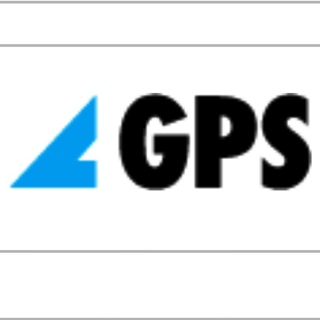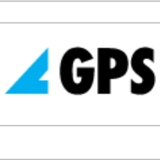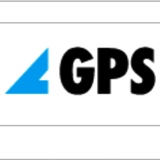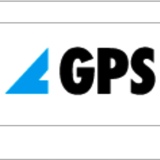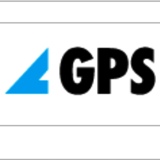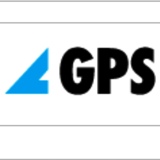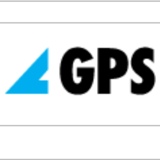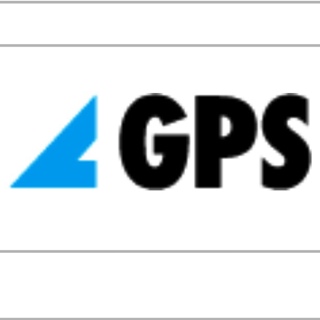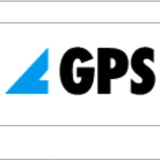Information
-
Document No.
-
Audit Title
-
Client / Site
-
Conducted on
-
Prepared by
-
Location
-
Personnel
Audit Details
-
Date of Assessment
1. MANAGEMENT AND SUPERVISION OF WORKPLACE TRANSPORT RISK. (See references 1, 2, 3, 4, 5)
-
Check, in consultation with your employees, that your level of management control/supervision is adequate
-
Are site rules documented and distributed?
-
Is the effectiveness of the plan is regularly reviewed (at least annually)?
-
Are your supervisors, drivers and others, including contractors and visiting drivers, aware of the site rules? Are they aware of their responsibilities in terms of helping to maintain a safe workplace and environment?
-
Has a risk assessment been completed for all workplace transport hazards?
-
Is the level of supervision sufficient to ensure that safe standards are maintained?
-
Are sanctions applied when employees, contractors, etc., fail to maintain these standards?
-
Are adequate steps taken to detect unsafe behaviour of drivers of both site and visiting vehicles as well as pedestrians? Are the underlying reasons investigated to correct unsafe behaviours?
-
Is there good co-operation and liaison on health and safety matters between your staff and those who collect or deliver goods?
-
Suggested Improvements.
-
Check what your drivers and other employees actually do when undertaking their work activities
-
Do drivers drive with care, e.g., use the correct routes, drive within the speed limit and follow any other site rules?
-
Do your drivers and other employees have enough time to complete their work without rushing or working excessive hours? Do you monitor Âjob and finish work to ensure drivers are not rushing to cut corners?
-
Are your employees using safe work practices, e.g., when (un)coupling, (un)loading, securing loads, carrying out maintenance etc.?
-
Do managers and supervisors routinely challenge and investigate unsafe behaviours they may come across?
-
Do managers and supervisors set a good example, for instance by obeying vehicle/pedestrian segregation instructions, and by wearing high visibility garments where these are needed?
-
Suggested Improvements.
2. SITE LAYOUT AND INTERNAL TRAFFIC ROUTES. (See references 1, 2, 6, 7, 8, 9, 10)
-
Check that the layout of routes is appropriate
-
Are the roads and footways suitable for the types and volumes of vehicular traffic and pedestrian traffic using them?
-
Are vehicles and pedestrians kept safely apart?
-
Where necessary are there suitable pedestrian crossing places on vehicle routes?
-
Is there a safe pedestrian route that allows visiting drivers to report for instructions when entering the site?
-
Are there adequate numbers of suitable parking places for all vehicles and are they used?
-
Is there a properly designed and signed one-way system used on vehicle routes within the workplace?
-
Is the level of lighting in each area sufficient for the pedestrian and vehicle activity?
-
Suggested Improvements.
-
Check that vehicle traffic routes are suitable for the type and quantity of vehicles, which use them.
-
Are they wide enough?
-
Do they have firm and even surfaces?
-
Are they free from obstructions and other hazards?
-
Are they well maintained?
-
Do vehicle routes avoid sharp or blind bends?
-
Suggested Improvements.
-
Check that suitable safety features are provided where appropriate.
-
Are roadways marked where necessary, e.g. to indicate the right of way at road junctions?
-
Are road signs, as used in the Highway code, installed where necessary?
-
Are features such as fixed mirrors (to provide greater vision at blind bends), road humps (to reduce vehicle speeds), or barriers (to keep vehicles and pedestrians apart) provided where necessary?
-
Suggested Improvements.
3. VEHICLE SELECTION & SUITABILITY (See references 1 & 2)
-
Check that vehicles are safe and suitable for the work for which they are being used.
-
Have suitable vehicles and attachments been selected for the tasks which are actually undertaken?
-
Do vehicles have good direct visibility or devices for improving vision where reversing canÂt be eliminated and where significant risk still remains eg external and side mirrors; vision aids such as CCTV; sensing device?
-
Are they provided with horns, lights, reflectors, reversing lights and other safety features as necessary?
-
Do they have effective service and parking brakes?
-
Do they have seats and seatbelts where necessary?
-
Are there guards to prevent access to dangerous parts of the vehicles, eg power take-offs, chain drives, exposed exhaust pipes?
-
Do drivers have protection against bad weather conditions, or against an unpleasant working environment, ie the cold, dirt, dust, fumes and excessive noise and vibration?
-
Is there a safe means of access to and exit from, the cabs and other parts that need to be reached?
-
Is driver protection against injury in the event of an overturn, and measures in place to prevent the driver being hit by falling objects, provided where necessary?
-
Are operators involved or consulted on vehicle selection?
-
Suggested Improvements.
4. VEHICLE MAINTENANCE (See references 1 & 2)
-
Check the level of vehicle maintenance is adequate.
-
Is there a regular preventative maintenance programme for every vehicle, carried out at predetermined intervals of time or mileage? eg in accordance with manufacturers instructions
-
Is there a system for reporting faults on the vehicle and associated equipment and carrying out remedial work?
-
Where vehicle attachments lift people or objects, are thorough examinations undertaken by a competent person (e.g. your insurance company)?
-
Do the drivers carry out basic safety checks before using the vehicle?
-
Suggested Improvements.
5. VEHICLE MOVEMENTS (See references 1 & 2)
-
Check that the need for REVERSING is kept to a minimum, and where reversing is necessary that it is undertaken safely and in safe areas.
-
Have drive-through, one-way systems been used, wherever possible to reduce the need for reversing?
-
Where reversing areas are needed are they marked to be clear to both drivers and pedestrians?
-
Are non-essential personnel excluded from areas where reversing occurs?
-
If risk assessment shows site controls cannot be improved further and you need a banksman to direct reversing vehicles, are they adequately trained and visible?
-
Suggested Improvements.
6. UN(LOADING) ACTIVITIES (See references 1, 2, 4, 11, 12)
-
Check that there are safe systems for LOADING and UNLOADING operations.
-
Are loading/unloading operations carried out in an area away from passing traffic, pedestrians and others not involved in the loading/unloading operation?
-
Are the load(s), the delivery vehicle(s) and the handling vehicle(s) compatible with each other?
-
Are loading/unloading activities carried out on ground that is flat, firm and free from potholes?
-
Are parking brakes always used on trailers and tractive units to prevent unwanted movement, eg when coupling vehicles?
-
Are the vehicles braked and/or stabilised, as appropriate, to prevent unsafe movements during loading and unloading operations?
-
Are systems in place to prevent trucks driving away while they are still being (un)loaded?
-
Are lorry drivers and others kept in a safe place away from the vehicle while (un)loading is carried out?
-
Is there a safe area marked where drivers can observe loading (if necessary)?
-
Has the need for people to go on to the load area of the vehicle been eliminated where possible?
-
Is appropriate lifting equipment available for (un)loading vehicles?
-
Is loading/unloading carried out so that, as far as possible, the load is spread evenly to avoid the vehicle or trailer becoming unstable?
-
Are checks made to ensure the load is adequately secured in line with the Department for Transport Code of Practice and not loaded beyond their capacity before the vehicle leaves the site?
-
Suggested Improvements.
7. DRIVER COMPETENCE (See references 1, 2, 13)
-
Check that your selection and training procedures ensure that your drivers and other employees are capable of performing their work activities safely and responsibly
-
Do drivers possess the necessary licences or certificates for the vehicles they are authorised to drive? e.g. FLTÂs, shunt vehicles, site dumpers etc.
-
Do you check the previous experience of your drivers and assess them to ensure they are competent?
-
Do you provide site specific training on how to perform the job, and information about particular hazards, speed limits, the appropriate parking and loading areas, etc.?
-
Do you have a planned programme of refresher training for drivers and others to ensure their continued competence?
-
Suggested Improvements.
8. (UN)SHEETING (See references 1, 2)
-
Check that sheeting and unsheeting operations are carried out safely
-
Do you use ground based sheeting methods?
-
Are sheeting and unsheeting operations carried out in safe parts of the workplace, away from passing traffic and pedestrians and sheltered from strong winds and bad weather?
-
Are the vehicles parked on level ground with their parking brakes on and the ignition key removed?
-
Are gloves, safety boots and, where necessary, eye and head protection provided, and used by those engaged in the sheeting/unsheeting operations?
-
Where manual sheeting is unavoidable, is there a system in place which avoids the need for a person on to climb on the vehicle or load, ie by providing a platform from which loads can be sheeted?
-
Suggested Improvements.
9. TIPPING (See references 1, 2)
-
Check that tipping operations are carried out safely
-
Do visiting drivers report to the site manager for any relevant instructions prior to commencing tipping operations?
-
Are non-essential personnel excluded from tipping areas?
-
Are tipping operations undertaken on ground that is level and stable, and a location free from overhead hazards such as power lines, pipework, etc?
-
Where sites are not level and stable, are the tipping faces safe for vehicles involved in tipping operations, eg compacted and no side slopes?
-
Are suitably sized wheel-stops provided where vehicles need to reverse prior to tipping?
-
Are drivers clear about when tailgates should be released or removed?
-
Do drivers check that their loads are evenly distributed across the vehicle prior to commencing tipping operations?
-
Are the drivers sufficiently experienced to anticipate loads sticking?
-
Do drivers always ensure that the body is completely empty, and drive no more than a few metres forward to ensure the load is clear?
-
Suggested Improvements.
-
Signed
References
-
01) Workplace Transport Safety: Guidance for employers HSG 136 HSE Books 2005 ISBN 0-7176-6154-7
-
02) Workplace transport safety : an overview Leaflet INDG 199(rev1) HSE Books 2005
-
03) Five steps to risk assessment INDG 163 (rev 2) Leaflet HSE Books 2006
-
04) Delivering Safely - free download at HSE Website http://www.hse.gov.uk/workplacetransport/information/cooperation.htm
-
05) Health and safety in road haulage INDG379 Leaflet HSE Books 2003
-
06) The Highway Code. Department for Transport 2004 ISBN 0-11-5526986
-
07) Designing for Deliveries Freight Transport Association 1998 ISBN 0 90299166 3 (£80 to members £100 to non-members from FTA phone 01892 526171)
-
08) Lighting at work HSG 38 HSE Books 1997
-
09) Safety Signs and Signals  Guidance on the Regulations L64 HSE Books 1996
-
10) The Traffic signs Regulations and general directions 2002
-
11) Code of Practice: Coupling or uncoupling & parking of large goods vehicle trailers 2006 Institute of Road Transport Engineers (IRTE) Society of Operations Engineers (SOE), London,SW1P 1PR phone 020 7630 1111 website: www.soe.org.uk22 Greencoat Place ,
-
12) Code of Practice - Safety of Loads on Vehicles (third edition) 2002 Department of Transport ISBN 011552547 5 (free download at website: http://www.dft.gov.uk/stellent/groups/dft_roads/documents/page/dft_roads_506864.pdf )
-
13) Rider-operated lift trucks: operator training Approved Code of Practice HSE Books L117
